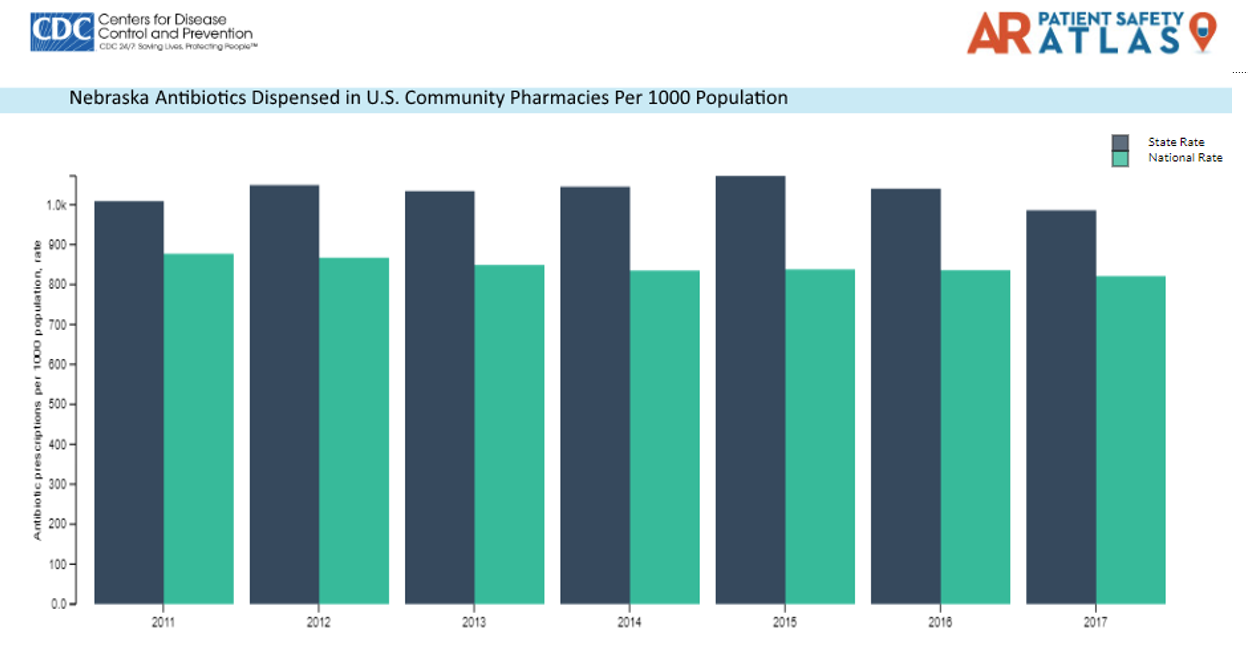Every year our ID division is excited to welcome numerous fellowship applicants during the summer and fall months. Match Day is the culmination of these applicants’ hard work and our collective opportunities to demonstrate what we have to offer each other. Our goal as program directors is to provide fellows with an educational experience that provides them with skills and knowledge to make them successful in whatever career path they choose.
The opportunities available to ID physicians continue to expand and this year we expanded our our fellowship program, accepting three first-year fellows for the first time. We are thrilled that Drs. Casey Zelus, Laura Selby and Jonathan Ryder chose UNMC to embark on this path to becoming ID physicians. Congratulations, and we look forward to welcoming you in July 2020!
 Dr. Trevor Van Schooneveld
Dr. Trevor Van Schooneveld
Program Director, Infectious Diseases Fellowship
Medical Director, Antimicrobial Stewardship Program
University of Nebraska Medical Center
985400 Nebraska Medical Center
Omaha, NE 68198-9400
Email: tvanscho@unmc.edu
Dr. Andrea J. Zimmer
Associate Program Director, Infectious Diseases Fellowship
Director, Oncology Infectious Diseases
University of Nebraska Medical Center
985400 Nebraska Medical Center
Omaha, NE 68198-9400
Email: Andreaj.zimmer@unmc.edu
 This content was written by Dr. James Lawler, Director, International Programs and Innovation,
This content was written by Dr. James Lawler, Director, International Programs and Innovation, 
 Content provided courtesy Dr. Salman Ashraf: Associate Medical Director, Nebraska Antimicrobial Stewardship Assessment and Promotion Program (ASAP) & Medical Director, Nebraska Infection Control Assessment and Promotion Program (ICAP)
Content provided courtesy Dr. Salman Ashraf: Associate Medical Director, Nebraska Antimicrobial Stewardship Assessment and Promotion Program (ASAP) & Medical Director, Nebraska Infection Control Assessment and Promotion Program (ICAP)

 Bellevue Medical Center (BMC) is a community hospital campus of Nebraska Medicine. In 2017, our Nebraska Medicine Antimicrobial Stewardship Program expanded to include BMC with the expansion of our ASP expertise at our main campus. Danny Schroeder, a pharmacist at BMC, was recruited to lead the stewardship activities on that campus, with expertise provided by Dr. Jasmine Marcelin. In celebrating #AntibioticAwarenessWeek, Danny shares his thoughts on community stewardship. Danny can be found on Twitter at
Bellevue Medical Center (BMC) is a community hospital campus of Nebraska Medicine. In 2017, our Nebraska Medicine Antimicrobial Stewardship Program expanded to include BMC with the expansion of our ASP expertise at our main campus. Danny Schroeder, a pharmacist at BMC, was recruited to lead the stewardship activities on that campus, with expertise provided by Dr. Jasmine Marcelin. In celebrating #AntibioticAwarenessWeek, Danny shares his thoughts on community stewardship. Danny can be found on Twitter at  In recognition of this annual observance, Governor Pete Ricketts signed a proclamation on November 4, 2009 in the State Capitol designating November 18 to 24 Antibiotic Awareness Week in Nebraska. Dr. Maureen Tierney, the head of the
In recognition of this annual observance, Governor Pete Ricketts signed a proclamation on November 4, 2009 in the State Capitol designating November 18 to 24 Antibiotic Awareness Week in Nebraska. Dr. Maureen Tierney, the head of the 
 Survey Link: (
Survey Link: (
Recent Comments